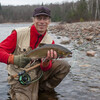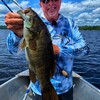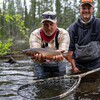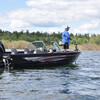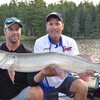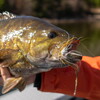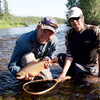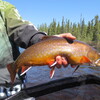
Who let the Dawg out
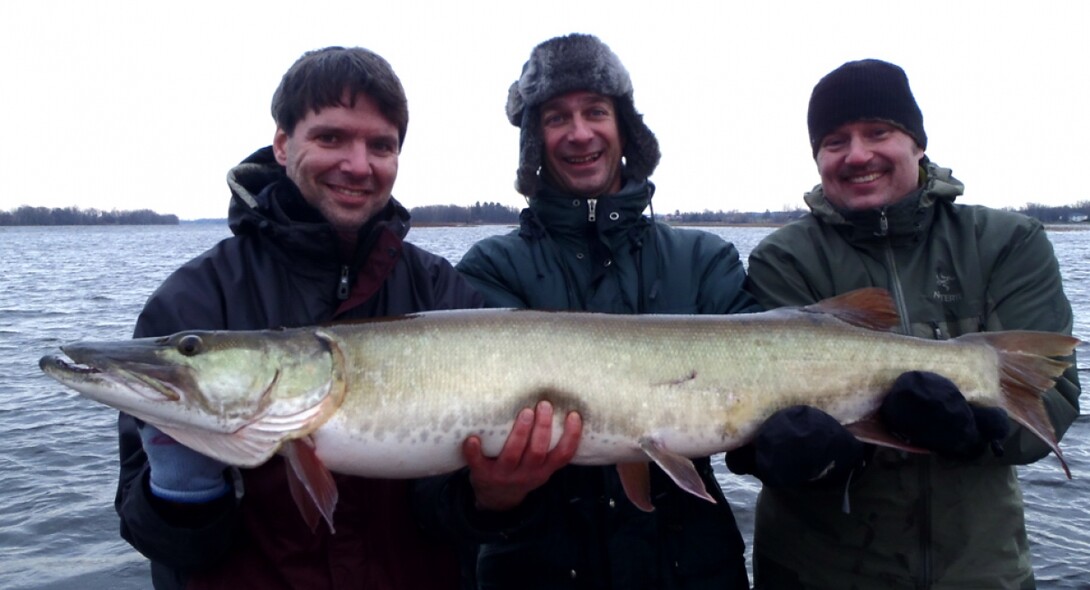
Wow – what can I say?
Last week I shared some of buddy John Anderson's secrets about using Bulldawg style soft plastic lures to catch late season muskies in the Ottawa River, in the Prescott-Russell region of Southeastern Ontario, and from the number of emails, comments and "page shares" that it generated, it seems to have struck a toothy critter chord.
I also promised that I would dig deeper this week into John's vast storehouse of knowledge – he is the owner of The Ottawa River Musky Factory – as well as his sidekick and frequent fishing partner, Wally Robins, to complete the Bulldawg trilogy.
So, let's do it.
You can also follow Gord on Facebook or Twitter to make sure you don't miss an update!
"As I mentioned," Anderson says, "Bulldawgs are my 'go to' muskie baits in late season because they're so versatile. You can fish them quickly, at a medium pace, or extremely slowly. At the same time, you can present them down on the bottom and up high in the water column in surprisingly shallow water less than three feet deep, using a slow, pumping retrieve. Wally's got that presentation down to an art."
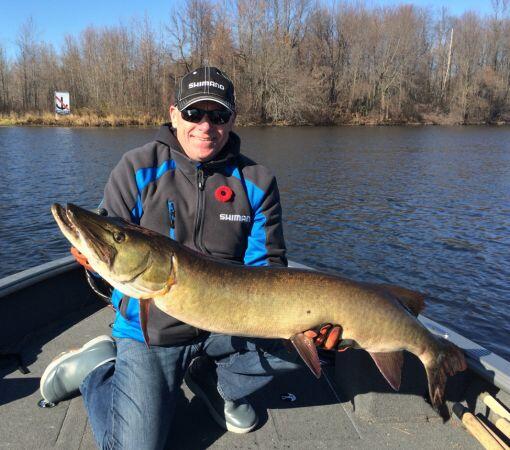
On sunny, bluebird days with high barometric pressure, John Anderson says muskies often prefer gaudy coloured baits and lures.
"What muskie anglers need to understand," Robins chimes in without missing a beat, "is that the tail of the Dawg does all the work for you. So retrieving the lure briskly, so that it brushes across the tops of weeds, is deadly when the fish are cruising."
"In late fall, like we're experiencing right now, I like a swim-drop retrieve. I'll move the Dawg along six to eight feet, pause and let it drop on a semi-taut line, then continue the cadence. The semi-taut line is the key, however, because you have to stay in contact with the bait when the water is icy cold. Big muskies often hit the bait so gently, all you feel is a subtle bump or tick. But don’t be fooled. You have to set the hook like you’re trying to penetrate the concrete."
Listening to Anderson and Robins share their Ottawa River muskie fishing experiences is like listening to a couple that has been married for many years. They complete each other's sentences.
"Remember that muskie I caught last year at Clapton’s Corners?" Robins says to Anderson, referring to a big fish he landed on a spot named for one of their favourite guitar players. "I felt a slight bump, set the hook and the rod doubled over. After four or five minutes of hand-to-hand combat, you slid the net under a horse that measured 51 inches in length and had a girth in excess of two feet."
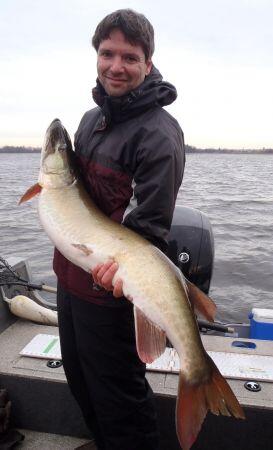
According to legendary Ottawa River muskie guide, John Anderson, changing the size of your lure can be as important as changing its colour.
"It was a 40-pound plus fish," Anderson confirmed, "and it looked like it had just swallowed a small spaniel. That muskie ate a giant Magnum Bulldawg, but it didn't hit any harder than a three-pound walleye."
Watching Anderson and Robins sort through hundreds of seemingly similar-looking Bulldawgs, dangling from pails and tackle boxes inside the boat, it was obvious they were looking for something. But why pick this one and not that one?
"Colour is way down on my list of important selection criteria," says Robins, "with one exception. On bluebird days with sky-high barometric pressure, for some reason known only to the fish, muskies want gaudy hues. My favourite pattern, and John’s too, is the Sherbet Bulldawg which we've lovingly dubbed SherbDawg. I often describe it as a bait that Stevie Wonder could easily see in a dark room. Picture an explosion of yellow and orange paint cans. Other colours that we commonly use are more boring, such as black with an orange tail, black with a chartreuse tail, walleye, white, and grey/white."
The whole time Robins is talking, Anderson is nodding his head in agreement, and then this thought strikes him.
"Instead of cycling through the colour spectrum," the river rat says, "when you're moving fish but you can’t get them to commit, change the size of your Dawg. Go to a Pounder if your shoulders can handle it or drop down to a Junior Dawg. I think the size of your lure matters as much, if not more, than the colour."
On that note, like most muskie anglers, I usually have at least a half dozen rods and reels on the deck of my boat. But I've taught myself over the years to become a switch hitter, to bat left as well as right. It pays huge dividends to your body when you're casting baits that weigh as much as a pound each, to switch every half hour between a right-hand retrieve reel and a left-hand one.
Robins' last tip, however, turns out to be the most prophetic.
"I always use a Bulldawg with a vivid tail, or that is brightly coloured at sunset when the visibility is low and light is fading quickly," says Robins. "I want to be able to see the bait as it nears the boat so I can transition smoothly into a Figure Eight. Unlike many musky anglers, I also prefer to have at least two to three feet of line between my bait and the rod tip. It prevents broken rods and gives me more control when I am battling a beast at short range. But there is a downside. You need to pay more attention to your hook setting angle, so you set against the fish to get better penetration."
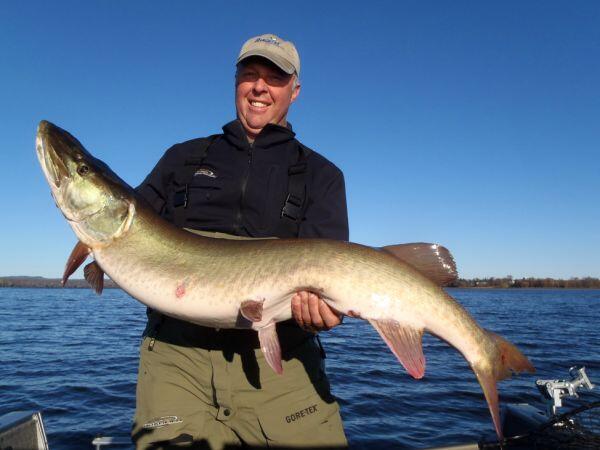
Big muskies will often hit your lure so gently in the cold water of late fall that all you will feel is a subtle bump of tick.
Predictive to say the least, as a few hours after Robins utters these words of wisdom, he is pitching a black-coloured Bulldawg adorned with a bright chartreuse tail as the light fades fast at Clapton's corner, our last stop of the day on the Ottawa River. Then, out of the corner of my eye, I suddenly see him lunge to the side of the boat, drop to his knees and go into a wide, sweeping, circular, figure eight.
Within a millisecond of the manoeuvre, there is an angry outburst of white water, I hear Robins holler and spot Anderson running from the back of the boat with the net.
It is like Robins has hogtied a crocodile and is fighting for his life not to be pulled overboard. But as Anderson plunges the net into the water, Robin's lure comes flying out, just as quickly, in the opposite direction.
Who let the Dawg out!
Recommended Articles
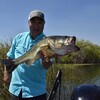
Tournament Tips
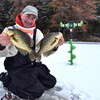
Seeing is Believing
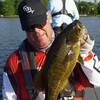
Lake of Bays fishing
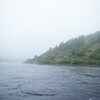
Fly Fishing Basics
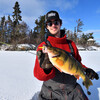
The Ultimate Winter Perch Trap
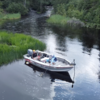
Fishful Dreams Do Come True
Best Bass Baits for Lodge Trips
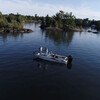
3 Must Fish Ontario Hotspots for Smallmouth Bass
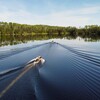
Leuenberger Air Service Is Your Ticket to Ontario's Best Fishing
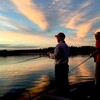
Four Fantastic Ontario Musky Waters
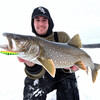
How To Stay Really Warm This Winter: The Second Edition
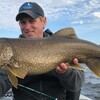
Cat Island Lodge
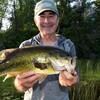
Worm Your Way In
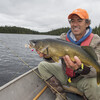
Kicking It Old School
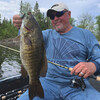
First Class Fishing Vacations
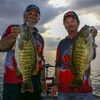
Smallmouth Bass: Lightweight Champ
